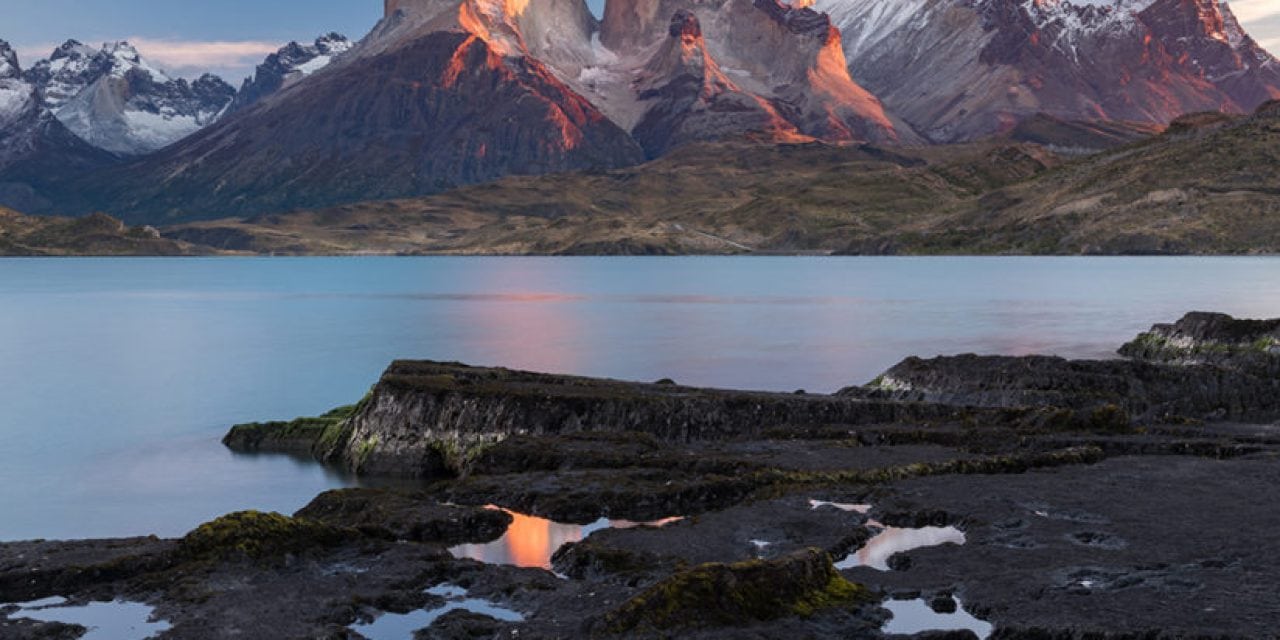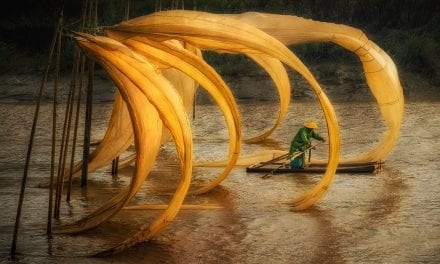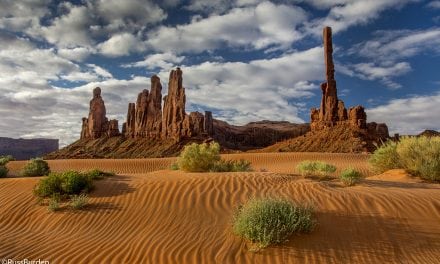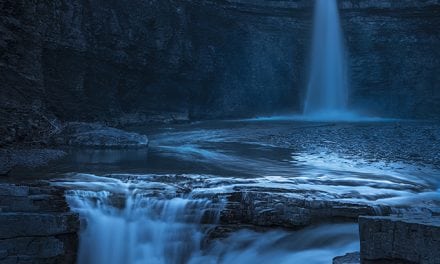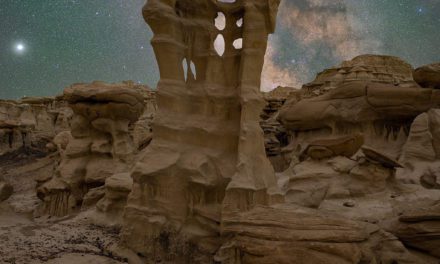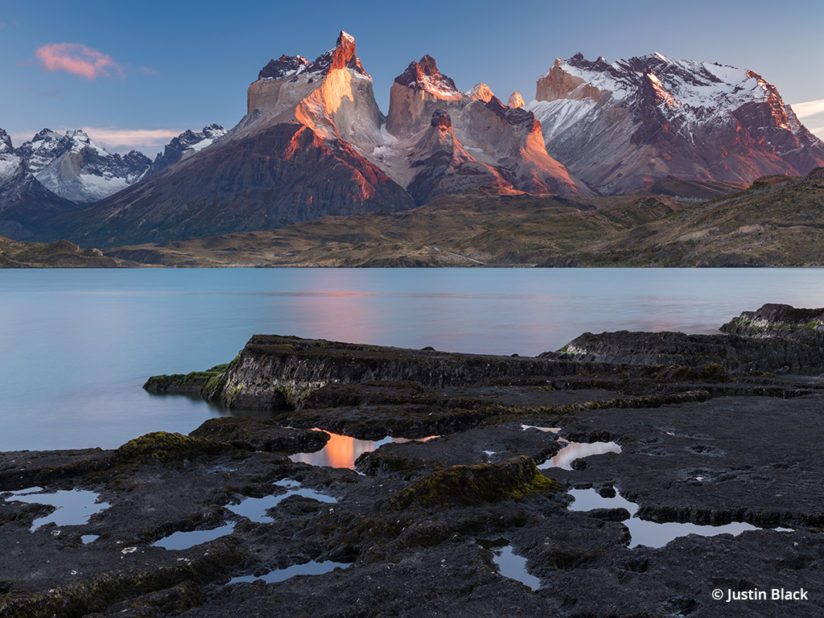
Cameras don’t matter. At least, they don’t matter as much as we think. If a museum of contemporary art should ever see fit to host a retrospective exhibition of my life’s work, it’s a safe bet that the curators will pay little attention to the camera marques and models used to make the photographs. The reality is that pictures succeed or fail based on how they communicate and move us, rather than the details of the gear used to make them. This is particularly true today with such a wide selection of quality photographic tools available to us. Great pictures suitable for fine prints can be made with very simple cameras, and, at the end of the day, it’s the photographer who makes all the difference.
That said, every once in a long while a new camera comes along that seems to fit me like a glove, aligning simultaneously with my priorities, preferences, workflow and image quality needs better than anything else out there. When a Fujifilm representative put the new Fujifilm GFX 50S medium format mirrorless camera in my hands earlier this year, I had the distinct impression that I was coming face to face with my future.
I was a late convert to digital cameras. After all, I had formally studied and mastered the technical challenges of film-based photography, and in the early years of the digital revolution I couldn’t conceive of the notion that a DSLR could deliver results on par with a 600-megabyte, 16-bit color drum scan from my 4×5 transparencies or negatives from which I made prints up to 8 feet in length. Today, however, a Nikon D810 and tilt-shift lenses are my virtual view camera, enabling me to make very high-resolution compositions, stitched together in Lightroom from three or more overlapping frames, which exceed my 4×5 film images in terms of dynamic range, sharpness and resolution (typically 72 megapixels or more). The D810 works beautifully for wildlife and general photography too, of course, and it occurs to me that, if one wished, one could make stunning images with this camera for many years to come, without feeling particularly limited by the technology. A nice thought, but not so fast …
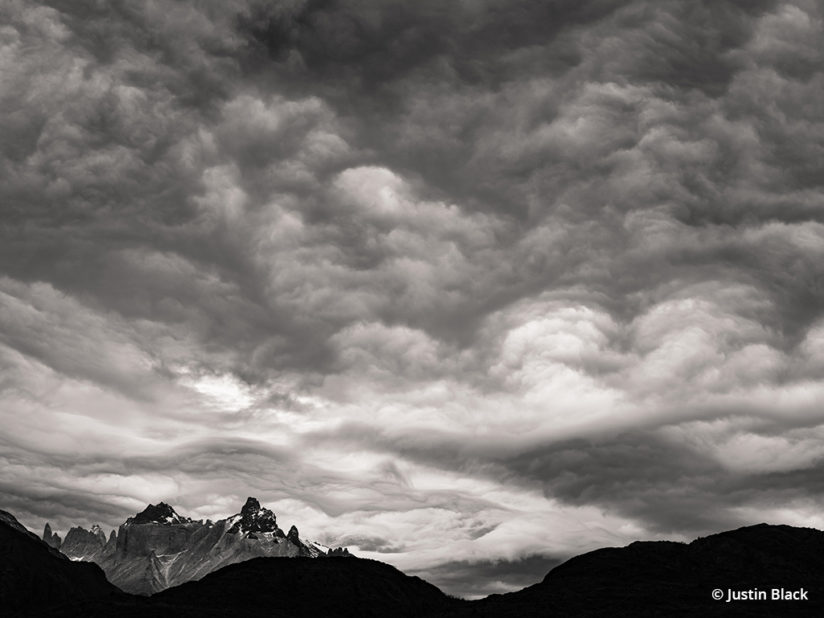
This past spring, I managed to get my hands on a GFX body and two lenses—the Fujinon GF32-64mmF4 R LM WR zoom, and the Fujinon GF120mmF4 R LM OIS WR Macro—to try out on a Visionary Wild photography workshop I led at Torres del Paine National Park in Patagonia. During our first morning, photographing alpenglow on the soaring peaks of the Cuernos del Paine across the turquoise waters of Lago Pehoe, it became clear that this camera system is an impressive and compelling achievement on many levels.
Particularly for landscape photographers, the potential benefits of a mirrorless medium format system camera like the GFX are exciting: super-fine image quality in a relatively compact, lightweight and rugged package. I’m not sure I would have ever considered a Phase One or Hasselblad digital SLR outfit for regular use in scenarios that involve a lot of hiking or exposure to the elements, but the Fuji, weather-sealed and lighter than some full-frame DSLRs, begs to be taken into the field.
At the heart of the Fujifilm GFX 50S camera is a large 33x44mm, 50-megapixel sensor, as well as a powerful processor. The base ISO of 100 yields extraordinary dynamic range, permitting exceptionally good shadow recovery while holding detail and tone in bright highlights. This shouldn’t be particularly surprising, as its sensor is provided by Sony, manufacturer of the sensors for many of the dynamic-range champs of recent years, such as Nikon’s D810 and D5, and Sony’s own a7 and a9 cameras, among others. The larger photosites of the GFX’s sensor enable it to collect more light per pixel, enhancing the strength of the input signal versus baseline noise. In practical terms, it delivers superb image quality, even into very high ISOs.
The trade-off is that the files are very large, so frame rate is limited to three per second, and the files benefit from fairly serious computing power. Fuji’s native RAF format (RAW) files save to about 50 megabytes in the “lossless compressed” mode, but opened in Photoshop in 16-bit color, the files are around 300 megabytes. Fortunately, the camera has a large buffer and also supports the new UHS-II SD cards, transferring files at a speedy 300 megabytes per second with a compatible card reader. Anecdotally, I should also note that the GFX seems to clean dust from its sensor far more effectively than any DSLR that I’ve encountered over the years, and it doesn’t even have a shutter in place to protect the sensor during lens changes. I’m not sure what the secret is, but Fuji appears to be on to something when it comes to minimizing dust spots.
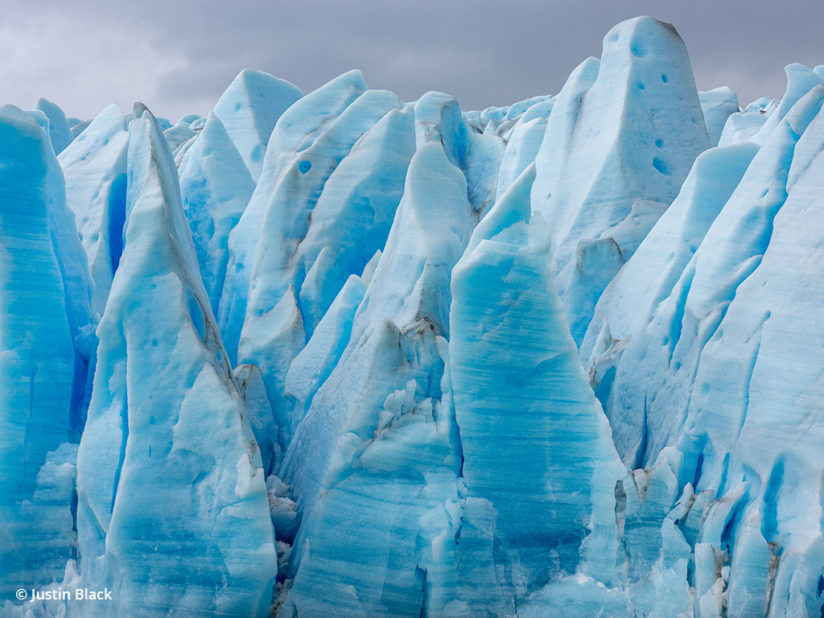
The foundation of any great camera system is in the lenses, of course, and it is clear that Fujifilm is making the most of recent advances in computer-aided optical design and pulling no punches to make the best lenses they can. Frankly, I am blown away by what they have achieved. Throughout the aperture range, the 32-64mm zoom yields image quality competitive with the best prime lenses. Even at ƒ/32, the effects of diffraction are minimal, freeing the photographer to choose aperture purely based on creative preference with regard to the depth of field. Chromatic aberration is virtually nonexistent, and distortion is very well controlled indeed. When stacking two filters, it does start to vignette slightly in the corners at its widest setting of 32mm, equivalent to a 25mm wide-angle lens on full-frame format. The 120mm, a macro design, is simply tack-sharp from corner to corner with incredible definition of detail and texture. Brilliantly executed image stabilization makes serious hand-held close-up work possible.
In fact, all the GF lenses are designed to perform well with an expected 100-megapixel sensor to be used in future GFX models, and it shows. On the Fujifilm GFX 50S, they clearly exceed the already-ample resolution of the sensor, delivering exceptional local contrast and well-defined detail. This is an optical feat that is easier to achieve on a medium format sensor and more challenging on high-resolution full-frame cameras such as Canon’s 50-megapixel EOS 5DS R, which only delivers full resolution with the very best lenses at optimal apertures.
All of the Fujinon GF lenses also feature excellent handling, with buttery smooth and well-damped control rings for focus, zoom and aperture, the latter of which has detents for third-stop settings, and extra well-defined detents for full-stops. An “A” aperture ring setting is for shutter-priority mode, and a “C” setting allows you to control aperture from one of the two electronic command dials on the camera body. Finish is superb. Lens hoods are well designed, and the one for the macro lens even has a sliding door so you can turn your polarizing filter with the hood in place.
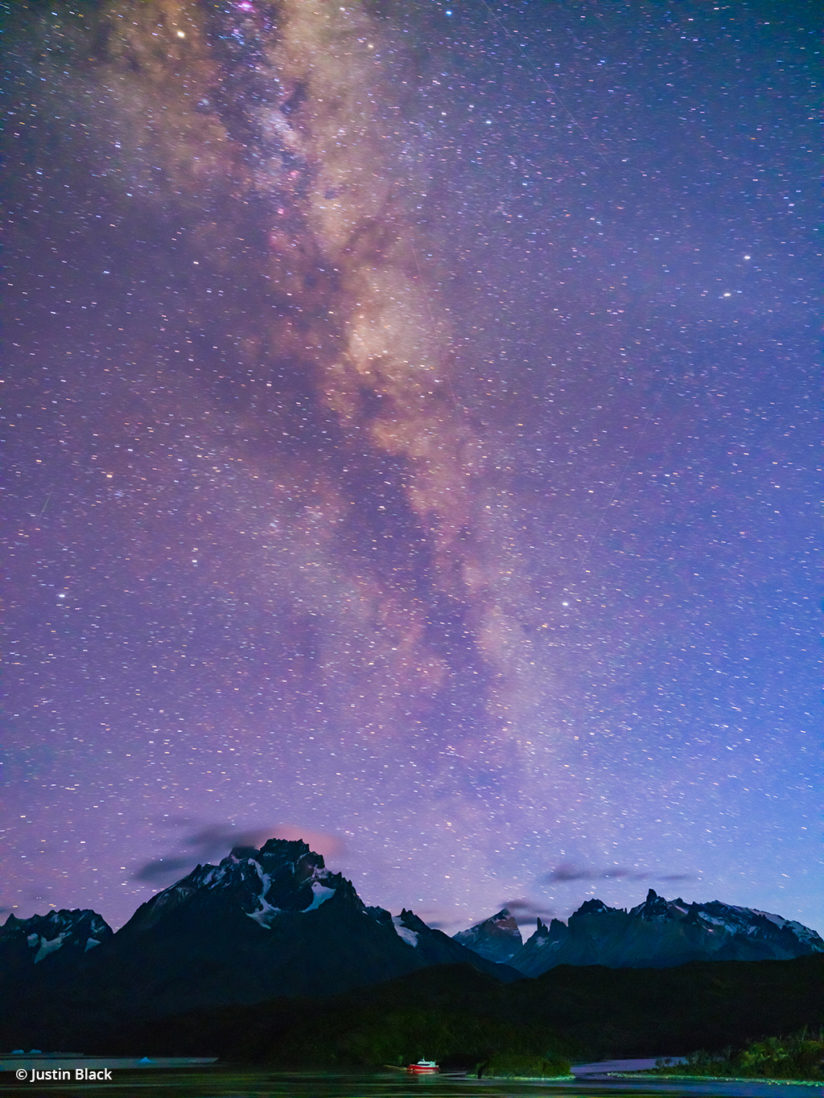
Beyond Fuji’s offerings, a world of lenses can be made to fit the GFX, with varying results. Those who already own lenses for other medium format systems may wish to take advantage of the many adapters available from Fotodiox and other manufacturers, though for the most part this will involve manual focus, manual aperture and stopped-down metering—not exactly a convenient way to work. There are even adapters for mounting 35mm-format lenses, though few of these project an image circle large enough to cover the sensor without serious vignetting or excessive fall-off of image quality toward the edges of the frame.
Despite the array of optical options available via adapted lenses, they aren’t going to surpass the newly designed native Fuji glass, so I wouldn’t recommend going out and buying older non-GF optics to mount on the GFX, unless one urgently requires a focal length or functionality (such as tilt-shift movements) not presently available in Fuji’s lineup. My own testing suggests that unless a lens is a recent design intended to perform well on high-resolution medium format sensors, it will not outperform the Fuji lenses, though the results may be acceptable.
Suffice it to say that the whole GFX system has been conceived and engineered from scratch to be a high-resolution, high-dynamic-range imaging solution offering superb image quality, and it is. But beyond that, the more important question to me is, “How does this camera help me execute my creative vision?” There is a lot about the design and feature set of the GFX that reveals the impressive thoughtfulness of Fujifilm’s design team, as well as their willingness to listen attentively to working photographers’ needs and preferences.
The GFX 50S is built for serious photographers to use hard and to good effect. To begin with, the camera’s grip is very comfortable to hold and, for the most part, controls fall easily to hand. The controls of the GFX are heavily customizable, enabling users to choose between making exposure settings via the traditional aperture ring and shutter speed dial, or electronic control dials on the front and back of the body. The function of no fewer than 10 control buttons on the back, front and top panel can be custom tailored to the photographer’s preference.
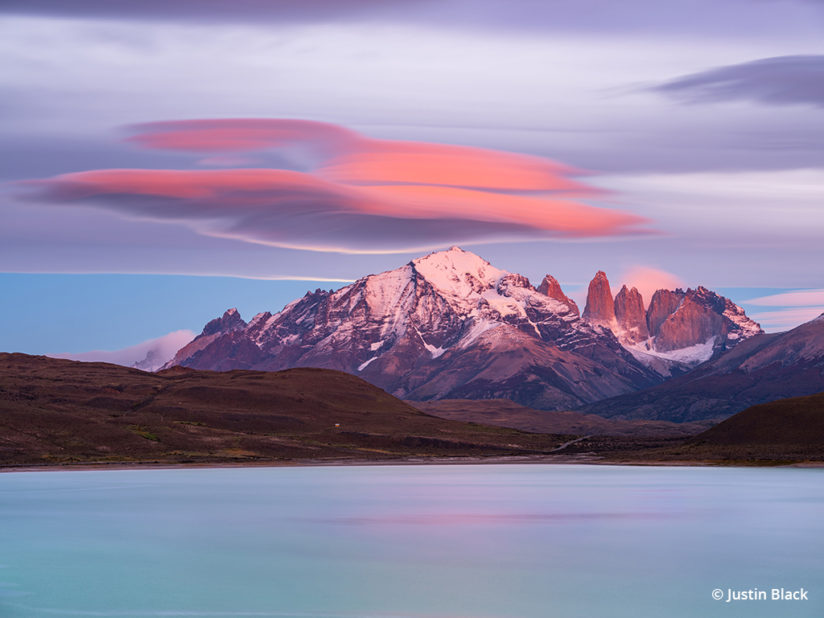
Those used to electronic viewfinders will be impressed by the large, bright, highly detailed view through the Fuji’s removable modular EVF unit, though it may take some getting used to for SLR users. The articulated rear screen is a very useful feature that I find myself using more and more when the camera is mounted on a tripod, particularly low to the ground. Both electronic viewing options provide useful tools like a level, grid overlay options, live histogram and customizable display of shooting info.
The implementation of the shutter, rated for at least 150,000 exposures, is an outdoor photographer’s dream, enabling exposure times up to 60 minutes long, as fast as 1/4000 sec. with the mechanical shutter and up to 1/16,0000 sec. using the electronic shutter mode. The longest exposure I made with the camera in Patagonia was a 3-minute moonlit scene at ISO 400, and the noise is negligible considering the exposure time. By the way, in a very welcome innovation, the Fuji’s long-exposure noise reduction feature is intelligent, only activating when needed, based on exposure duration, ISO setting and brightness of the exposure. I haven’t even begun to push the limits of the shutter at the high end. The shutter is also very quiet and well damped, and the electronic shutter mode eliminates all shutter vibration if you so desire. As with many other mirrorless cameras and SLRs, there is a short blackout in the viewfinder during the exposure, but this is very brief—the view returns as soon as the shutter reopens after exposure.
There has been some fretting in online forums about the GFX’s flash sync speed of 1/125 sec., which is a bit odd to me since plenty of photographers loved working with film-era cameras like the Mamiya and Pentax 645s that synced at 1/60 sec., or Hasselblad FC series cameras that synced at 1/90 sec. The reality is that we’re fortunate to get 1/125 sec. out of a focal plane shutter on such a large sensor. If you need faster sync speed, we have options. Fujifilm makes an adapter to mount the leaf-shutter-equipped Hasselblad H-mount lenses (which are Fujifilm-made, after all), providing control of shutter speed and aperture from the control dials on the GFX camera body. Given that the camera can control the shutter in these lenses, it will be interesting to see whether native GF Fujinon leaf-shutter lenses will be offered at some point in the future. Speedlight accessories enable high-speed sync with all lenses as well.
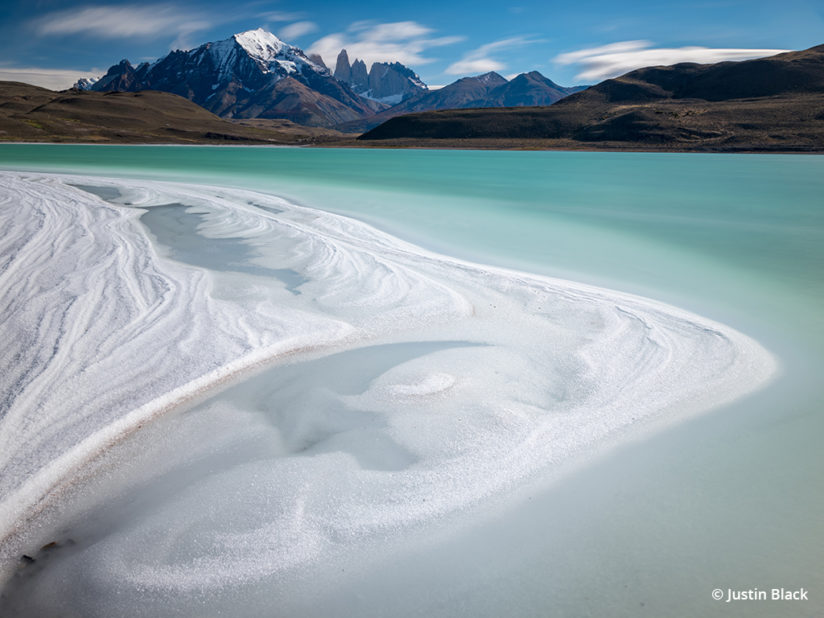
Unlike DSLRs, which commonly require focus calibration due to slight misalignments in their mirror-based autofocus systems, an upside of using a mirrorless camera is that autofocus should be very accurate indeed since focus is calculated based on edge contrast delivered directly to the imaging sensor, and this is certainly the case with the Fujifilm GFX 50S. Wherever I place the autofocus point, the camera focuses relatively quickly and accurately, so long as the subject is still. In very low light or low-contrast situations, the focus can hunt a bit at times, though we can expect Fuji to improve autofocus performance via firmware upgrades as it has with other contrast-based AF cameras like the X-Pro1. If you need a camera to track moving subjects, however, the GFX is not the solution, in my opinion, so I’ll be keeping my trusty Nikons for wildlife situations. If Fuji were to produce a long telephoto zoom and a new-generation GFX that reliably tracks fast action, however, I might reconsider whether I need DSLRs anymore at all.
Other nice aspects of Fuji’s focus control implementation include an electronic depth-of-field scale in the viewfinder (since the focus-by-wire lenses aren’t marked with one), which I find to be very useful. Also, there is a well-positioned focus activation button on the rear of the body, which also works when the camera is in manual focus mode. Focus points covering most of the image area are selected very easily using a conveniently positioned joystick on the back of the camera, and focus point size is easily adjusted as well.
The camera offers a variety of options for set up of metering and white balance modes, as well as bracketing of exposure, film simulation mode, ISO, white balance and dynamic range settings. Metering and auto white balance work extremely well, about as well as any digital camera I’ve ever used.
Manufacturers of digital cameras incorporate all sorts of extra features beyond the basics of aperture, shutter speed, ISO and focus into their products these days, and the GFX is no slouch in this department. The camera supports TTL flash, an electronic cable release and high-definition video with mic input, and there is even smartphone app to operate the camera from your phone or tablet, among many other capabilities.
It will be interesting to see how the GF lens line continues to develop. I eagerly await the arrival of the new 23mm super-wide for landscape work, and I would be shocked if it didn’t release a telephoto of about 240mm (189mm equivalent) in the near future. Eventually, it would be nice if Fuji were to offer a tele-zoom in the range of 200-500mm. I won’t hold my breath for tilt-shift lenses, since the GFX can be easily mounted to technical cameras such as the Cambo Actus.
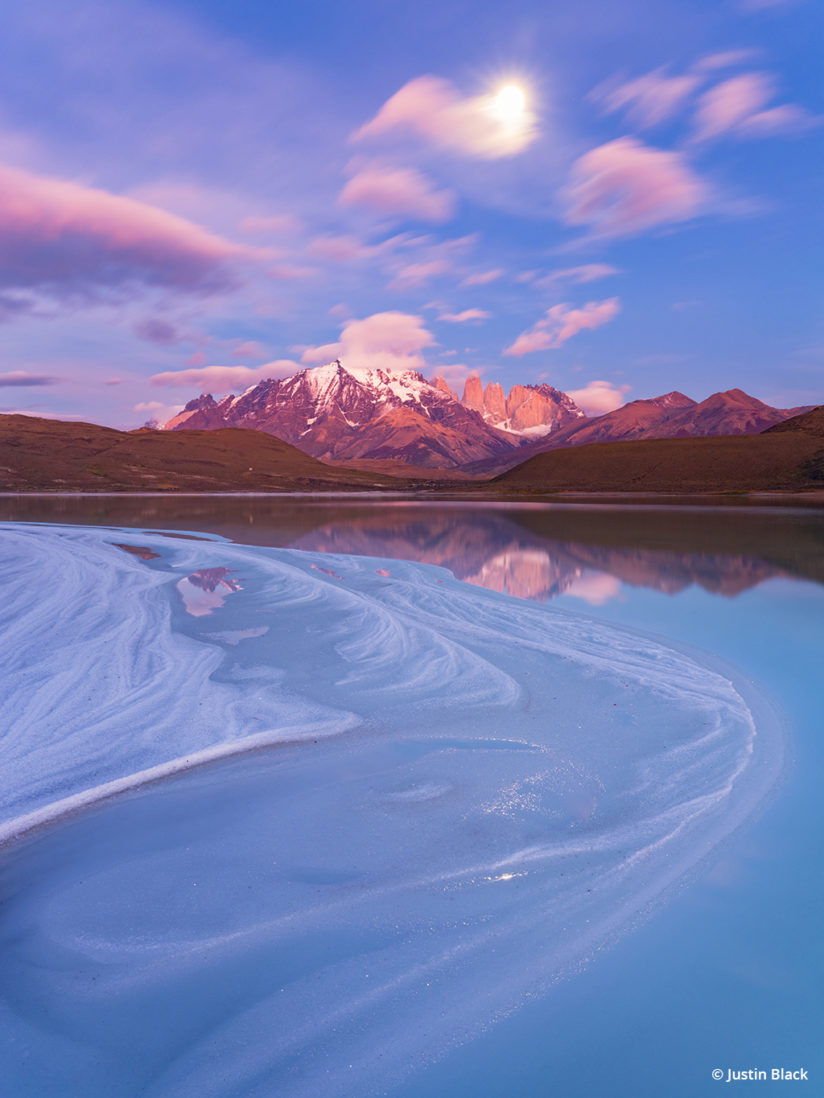
The bottom line is that the Fujifilm GFX 50S is a superb camera for photographers who want to make big prints, work deliberately and don’t require quick-tracking autofocus and fast frame rates. Fujifilm has focused on optimizing the fundamentals, giving us lenses with superb optics and brilliantly engineered aperture diaphragms, spot-on autofocus, a very flexible shutter system, excellent performance at high ISOs and low light, wonderful dynamic range and color rendition that is the best I have ever seen in any digital camera. By every standard I can think of, image quality is stunningly good. Handling of the body and lenses alike is excellent, and I find that the camera just gets out of the way of the photographer’s creativity. It is light enough to travel and hike with easily, no heavier than a Nikon or Canon DSLR. The weather sealing of the GFX body and GF Fujinon lenses worked perfectly in Chile, by the way, even when exposed for long periods to wind-driven Patagonian rain and dust.
You may be asking, why bother with medium format, when there are so many excellent, high-resolution full-frame cameras out there. It’s true that relatively few photographers need the sort of extreme image quality delivered by today’s medium format cameras. Unless you’re regularly making prints over 24×32 inches, most photographers will be better off with full-frame cameras. For those of us who do routinely make large prints, however, the GFX system is worth a hard look. For now, whether I am shooting landscapes, aerials, macro work or environmental portraits, the GFX will be my camera of choice.
The post Fujifilm GFX 50S Review appeared first on Outdoor Photographer.

